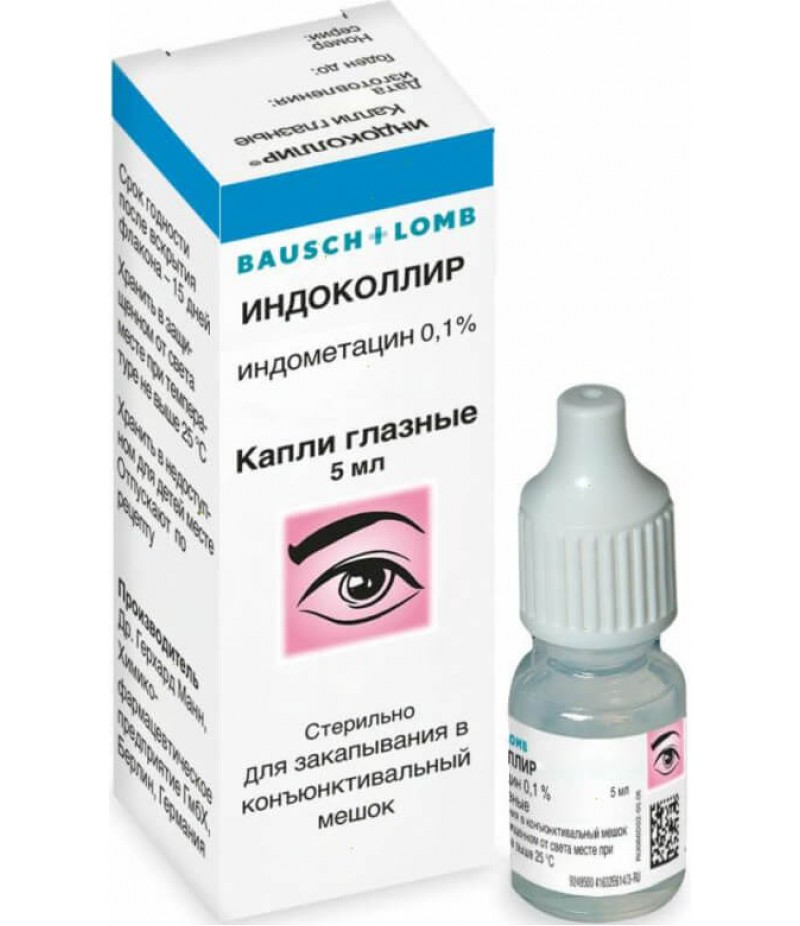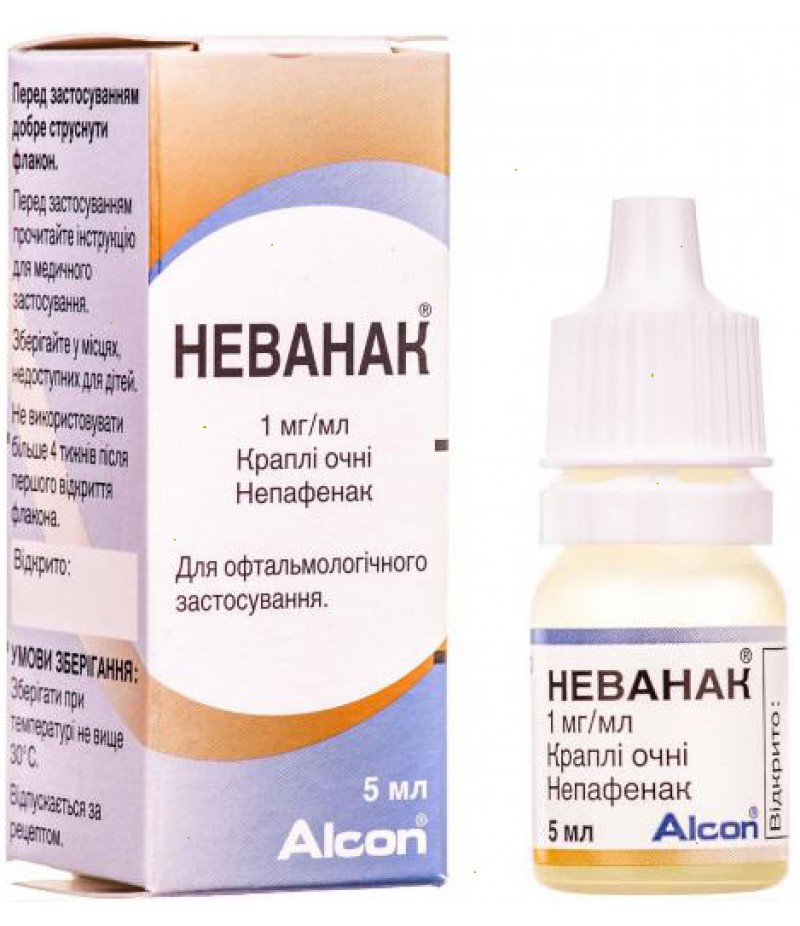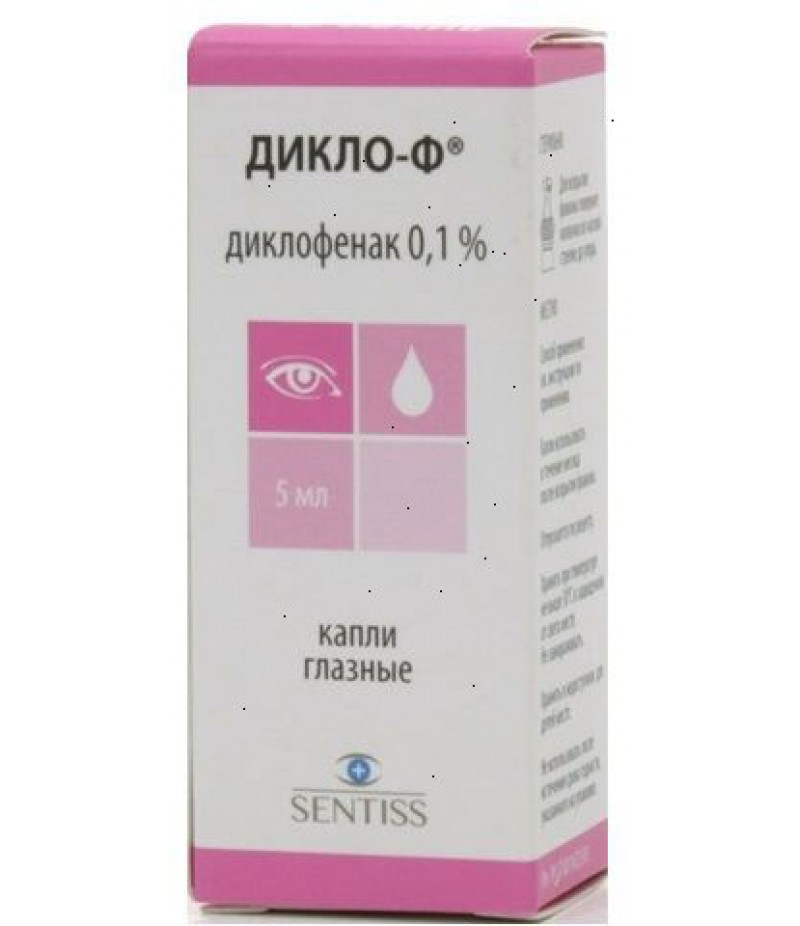Indocollyre 0.1% 5ml
- $22.25
- 3 or more $21.80
- Availability:In Stock
Instruction for Indocollyre eye dropsYou can buy Indocollyre hereCompositionIn 1 ml of eye drops contains 1 mg of indomethacin.As auxiliary inactive substances used: arginine, thiomersal, hydroxypropyl-β-cyclodextrin, hydrochloric..
Tags: drops
Instruction for Indocollyre eye drops
You can buy Indocollyre here
Composition
In 1 ml of eye drops contains 1 mg of indomethacin.
As auxiliary inactive substances used: arginine, thiomersal, hydroxypropyl-β-cyclodextrin, hydrochloric acid and distilled water.
Form of issue
Indocollyre - eye drops with concentration of active substance - 0.1%, produced in 5 ml dropper bottles, one each in a cardboard bundle.
pharmachologic effect
Has analgesic and anti-inflammatory effect.
Pharmacodynamics and pharmacokinetics
The main mechanism of Indocollyre's action is the inhibition of the synthesis of prostaglandins as a key stage in the pathogenesis of inflammation and pain by reducing indomethacin activity of the cyclooxygenase enzyme. Indomethacin by its nature is a non-steroidal anti-inflammatory drug that, when applied locally, can reduce the intensity of the inflammatory process and the severity of the pain syndrome, acting by the mechanism of inhibition of generation and pain impulses along the nervous structures. In addition, indomethacin reduces the synthesis of thromboxane type A, which causes an increase in bleeding time.
Pharmacokinetics
Instillation into the conjunctival sac leads to a slight systemic absorption of indomethacin.
Indications for use
It is used to inhibit miosis during surgical interventions on the anterior chamber of the eye, including cataracts, and also as a prophylactic for cystic edema of the macula in the postoperative period.
Other surgical interventions on the eyeball - prevention and treatment of various etiologies of inflammatory processes.
In the treatment of non-infectious conjunctivitis.
In the presence of pain syndrome after photorefractive keratectomy.
In combination with local antimicrobial therapy is used to treat or prevent post-traumatic inflammatory processes as a result of injuries of the eyeball, including penetrating.
Contraindications
Hypersensitivity to the components of Indocollyre preparation, as well as to acetylsalicylic acid or other NSAIDs. As a result, there may be attacks of bronchial asthma, the development of urticaria or acute rhinitis.
Do not use from 6 months. pregnancy or while breastfeeding.
Eye drops are contraindicated in patients with peptic ulcers or impaired functioning of the kidneys and liver.
The drug is not used in pediatrics.
With caution appoint Indocollyre, if the patient:
established or in an anamnesis epithelial herpetic keratitis;
haemophilia, prolonged bleeding time or other diseases associated with blood clotting disorders.
Side effects
Visual organs: after instillation, there were rare cases of mild or moderate burning, hyperemia, temporary loss of vision clarity and photosensitivity after application of drops; prolonged use may cause corneal opacification or conjunctivitis, as well as other side effects caused by indomethacin.
Allergic reactions are manifested most often in the form of itching and redness of the skin.
Eye drops Indocollyre, instructions for use (Method and dosage)
Indocollyre for inhibition in intraoperative miosis should be instilled in 1 cap. in the conjunctival sac before the operation for 2 hours 4 times, that is, the interval is at least 30 minutes.
As a preventive agent for cystic edema of the macula, one drop should be instilled. 3-4 times a day for 1 month after the operation.
Instructions for use Indocollyre for other indications: 1 cap. 3-4 times a day 1-4 weeks. Dosage treatment and duration may vary depending on the severity of the condition and the course of the disease.
Overdose
The drug is not dangerous to human health, even when ingested.
Interaction
Indocollyre can be used concurrently with other eye drops, including glucocorticosteroids. However, to prevent the washing out of indomethacin with subsequent doses, the recommended interval between instillations is at least 5 minutes. In addition, the interaction of different drugs with Indocollyre causes the following effects:
anticoagulants, Lithium preparations - the potency of their indirect effects;
diflunizal - may lead to the development of bleeding from the gastrointestinal tract;
saluretics, β-adrenoblockers - weakening of their effects.
Storage conditions
In a dry place, sheltered from sunlight. The temperature should not be above 20 ° Celsius.
Shelf life - Up to two years. After opening the vial-dropper can be used for 6 weeks.
special instructions
Before using drops, it is recommended to remove contact lenses. You can set it back in 15 minutes.
Close the bottle after each use of the drug, do not touch the eye with a pipette!
Due to adverse reactions immediately after instillation, it is not advisable to operate the machine and equipment, complex equipment or machines within 30 minutes, since they require clear vision.
In pregnancy and lactation
There were no detailed clinical studies Indocollyre for the safety of use in pregnancy or lactation. However, the use of the drug in the first 5 months is permissible. pregnancy under the control of the attending physician provided that the potential benefit of treatment for the mother is significantly higher than the possible risk to the fetus. In the future - since the 6th month eye drops are contraindicated, since the fetus may have a violation of the functions of the cardiovascular, respiratory system or kidneys.
The active ingredient - indomethacin excreted with the mother's milk, therefore, if necessary, therapy is carried out, stopping breastfeeding.
Reviews about eye drops Indocollyre
Despite the fact that you can buy the drug only if you have a prescription, Indocollyre has many reviews, and they can differ diametrically: some talk about burning and redness after instillation with drops, and others - note its effectiveness for pain relief and inflammation in various diseases and wounds eyes.



